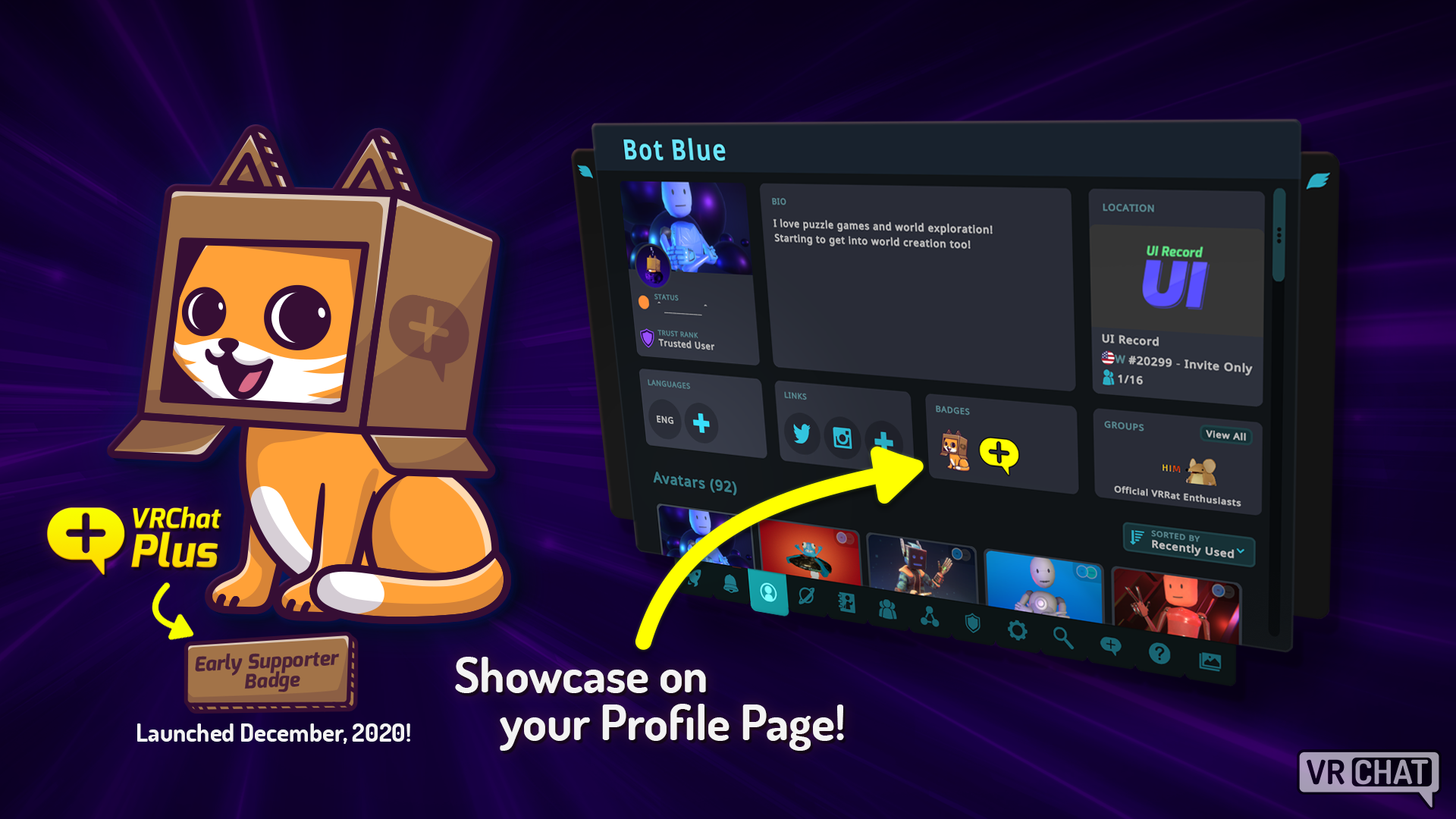
Apr 13, 2023
VRChat - Tupper
Hello everyone! We've got a new build out for you! This is VRChat 2023.2.1, build 1294.
⚠️ This update is NOT network compatible, so you will not be able to see your friends until they update. Users who are on older versions will not be visible to those on the latest version, and vice versa. Please ask your friends to update VRChat!
Check out our latest Video Patchnotes for more info!
FULL PATCHNOTES
Here's the short list. This isn't everything, check the patch notes above!
⚠️ This update is NOT network compatible, so you will not be able to see your friends until they update. Users who are on older versions will not be visible to those on the latest version, and vice versa. Please ask your friends to update VRChat!
Check out our latest Video Patchnotes for more info!
FULL PATCHNOTES
Here's the short list. This isn't everything, check the patch notes above!
Client
New Features
- Native eye tracking is here! It currently supports Quest Pro standalone as well as OSC input.
- There's also a bunch of new settings available in the Tracking & IK main menu page such as:
- Disabling eye-look and eyelid tracking separately
- Setting eye tracking to turn off when you mute yourself (in case you want to keep the eye rolling private…)
- A toggle that will show you where your eyes are currently looking. This toggle does not show for remote users.
- Force eye tracking raycast, which will force the eyes to converge at a distance determined by a raycast hit. A fancy feature that lets eye tracking align to the depth of different surfaces in your worlds. Perfect for those who love staring longingly into deep abysses…
- And do not fear, if your avatar had the existing automatic eye-look set up in the SDK, it should work with this system
- Note that winking is coming soon (in a future SDK version), but it will require a reupload to function
- Check the docs for OSC endpoints
- Disabling eye-look and eyelid tracking separately
- The Settings menu has been completely overhauled with a new look and better organization
- Avatar downloads are now prioritized by size, which means loading into a world—especially on slower internet connections—will show you more avatars more quickly
Improvements
- Added a new launch flag --disable-hw-video-decoding that will force software video decoding on AVPro video players
- This may provide a fix for those experiencing video issues on AMD GPUs, but will use slightly more CPU resources instead; if you have experienced stuttering or crashing with video players before, please let us know what hardware you have and if enabling this helps!
- The 2FA input panel will now auto-select the text field
- The camera focus ring will now fade to gray after a few moments so you can focus ( ;) ) more on your picture's subject
Fixes
- "Here" tab now refreshes current location after switching instances
- The Groups Info page will now allow you to accept pending invites instead of always showing "Request to Join"
- Issues when logging out and back in without restarting
- Nameplates no longer float too high above avatars in relation to SkinnedMeshRenderers without a root bone
- The "emergency avatar" shortcut (~, \, #, or similar) no longer triggers while typing in a text field
- "Represent Group" button now shows when viewing a group from a user profile
- Improved transparent shader for avatar hider and earmuff distance visualizations
- Built-in keyboard weirdness when moving the caret to the start position and entering a new character
- Placeholder controller image on "Controls" page
- MSAA no longer defaults to "Off" on fresh installs
- Camera issues such as scrolling through camera filters, camera submenus, and camera scrolling over focus settings when using the arrow buttons
- Issues when loading "Generic" avatars
- Issues with animated audio on avatars when earmuffs are enabled
- Hovering over elements in the wing menus sometimes not animating correctly
- Potential improvements to EAC unloading, preventing some users from restarting VRChat
- Safety and security fixes
Additional Notes
- In a future release of VRChat, we're adding tooltip translations to the Quick Menu and Main Menu for Japanese, German, French, Italian, Spanish, and Korean!
- These translations are only for the tooltips to start
- These were originally slated for release with this update, but due to feedback from our localization community, we're delaying until a later release
- If you want to help out, check out this guide
- These translations are only for the tooltips to start
Creators
Improvements
- Added IsPosed parameter to PhysBones
Fixes
- OnOwnershipTransferred now fires when master client leaves
- Serialized network IDs (from the Network ID tool in SDK) now read correctly in client, which fixes some worlds breaking their Udon sync between platforms
- Security changes around the Udon Blacklisting system. Any GetComponents call may now return null entries if there are filtered components: Watch for this in your scripts!



















